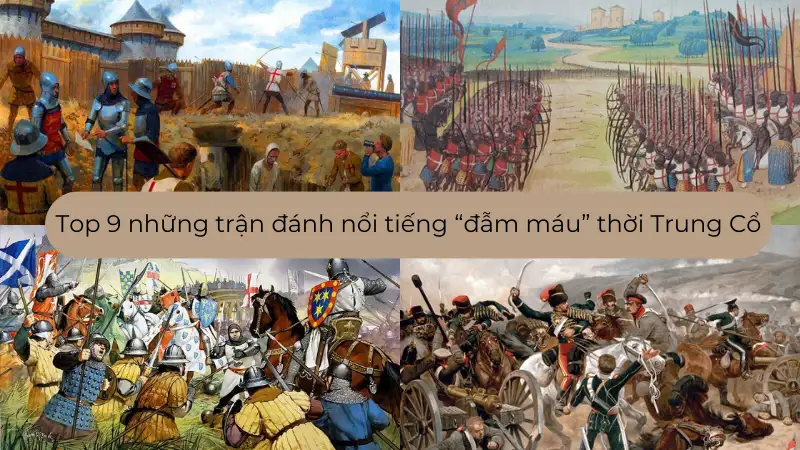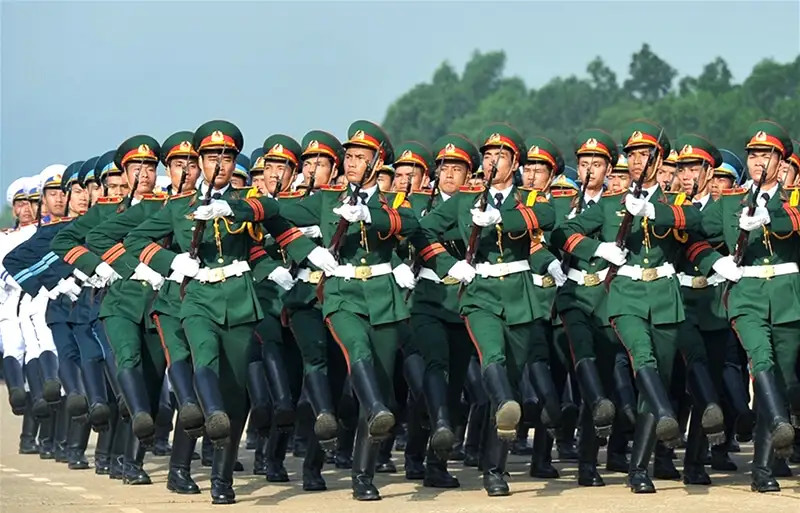The medieval period was a tumultuous era marked by decisive battles that reshaped Europe’s political and social landscape. These clashes not only showcased the brutality of warfare but also highlighted unique military tactics and the courage of warriors. In this article, Pywar takes you through the most famous medieval battles, providing details on troop numbers, casualties, outcomes, ancient weapons, causes, and detailed accounts of warfare during the Middle Ages.
Battle of Hastings (1066)
The Battle of Hastings took place on October 14, 1066, marking the end of the Anglo-Saxon dynasty and the beginning of Norman rule in England. Led by William the Conqueror, the Norman army of about 7,000 faced the Anglo-Saxon force of roughly 10,000 under Harold Godwinson. The Normans emerged victorious, with approximately 5,000 Norman and 6,000 Anglo-Saxon casualties or deaths.
The primary cause was William’s claim to the English throne after King Edward the Confessor died without naming a successor. The Normans employed multi-directional attacks and leveraged heavy cavalry tactics, using longswords and longbows to defeat the Anglo-Saxons. The Battle of Hastings not only shifted power in England but also profoundly influenced its culture and language.

Battle of Agincourt (1415)
The Battle of Agincourt, one of the most renowned clashes of the Hundred Years’ War between England and France, occurred in 1415. Despite having only about 6,000 troops, the English faced a French army of approximately 20,000. Under King Henry V’s leadership, the English used crossbows and longbows effectively, combined with solid defensive tactics, to secure a stunning victory. Casualties totaled around 2,000 English and 10,000 French.
The battle stemmed from King Henry V’s invasion of France to reclaim lost English territories and rights. Agincourt demonstrated the power of a smaller, well-organized force, with effective use of archery and disciplined defense proving decisive.
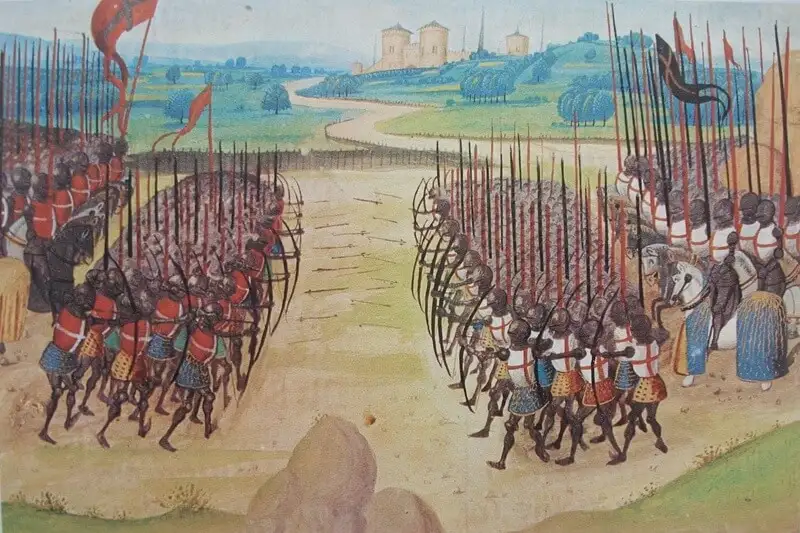
Battle of Stirling Bridge (1297)
In 1297, the Battle of Stirling Bridge pitted a Scottish force of about 6,000, led by William Wallace, against an English army of roughly 12,000. The Scots triumphed, with around 500 Scottish and 6,000 English casualties. Despite being outnumbered, the Scots exploited clever guerrilla tactics and the narrow terrain of Stirling Bridge to secure victory.
The battle was part of Scotland’s fight for independence from English rule. The Scots’ tactical ingenuity and fierce spirit bolstered their struggle for freedom.
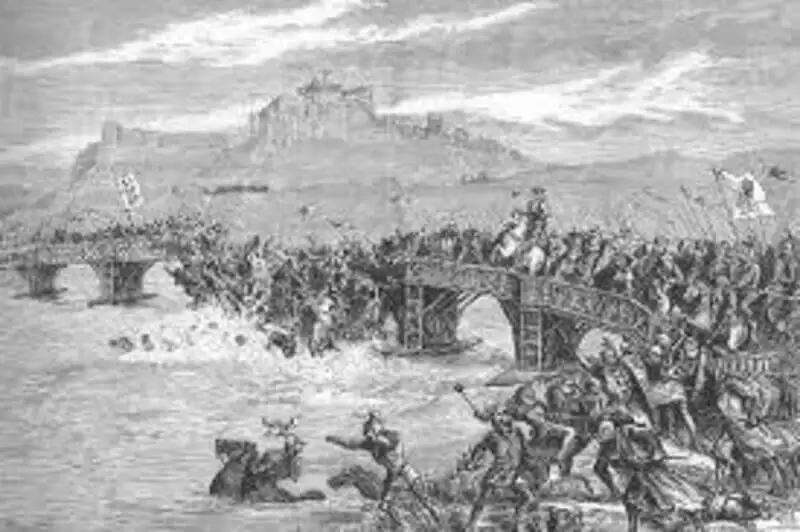
Battle of Crécy (1346)
The Battle of Crécy, fought in 1346, was a pivotal engagement in the Hundred Years’ War. King Edward III led an English army of about 12,000 against a French force of approximately 20,000. Using crossbows and pikes effectively, the English prevailed, with casualties of around 2,000 English and 10,000 French.
Triggered by Edward III’s claim to French lands and rights, the English chose the Crécy hill as their battlefield, employing archery to decimate French cavalry before they could close in. Disciplined tactics marked a shift in medieval warfare.
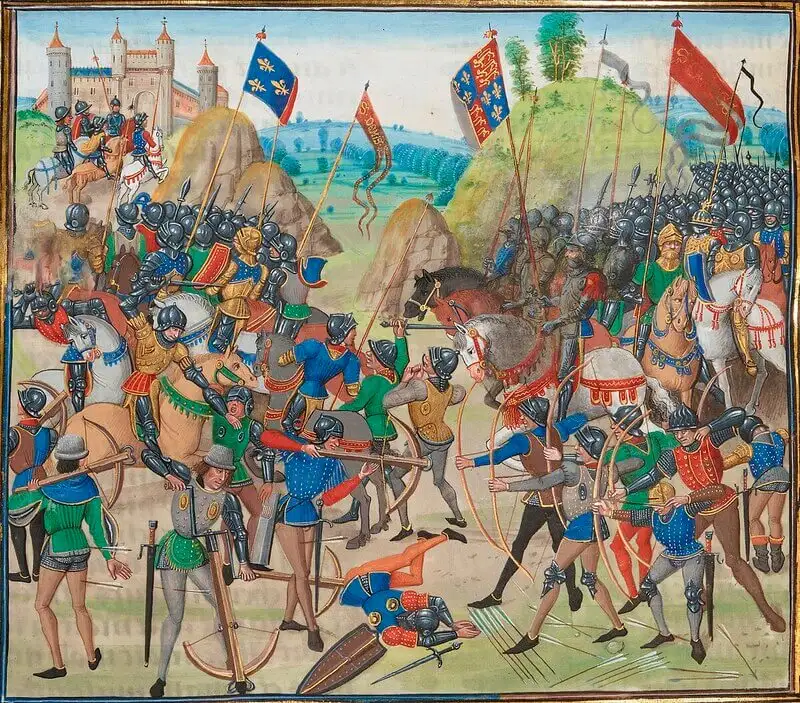
Battle of Crécy (1346)
The Battle of Crécy, fought in 1346, was a pivotal engagement in the Hundred Years’ War. King Edward III led an English army of about 12,000 against a French force of approximately 20,000. Using crossbows and pikes effectively, the English prevailed, with casualties of around 2,000 English and 10,000 French.
Triggered by Edward III’s claim to French lands and rights, the English chose the Crécy hill as their battlefield, employing archery to decimate French cavalry before they could close in. Disciplined tactics marked a shift in medieval warfare.
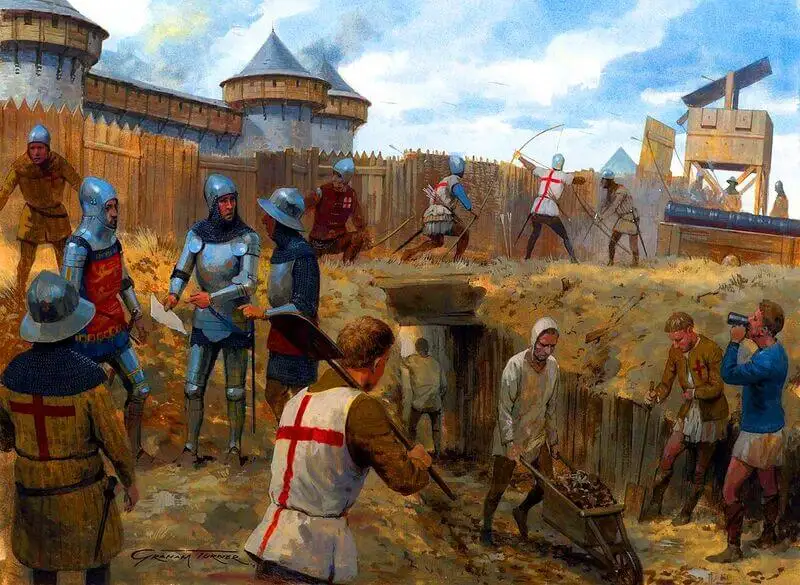
The Battle of Crécy, a key engagement in the Hundred Years’ War. (Source: Collected)
In 1314, the Battle of Bannockburn saw a Scottish army of about 5,000, led by Robert the Bruce, defeat an English force of roughly 12,000. The Scots prevailed, with around 1,000 Scottish and 7,000 English casualties. This decisive battle bolstered Scotland’s independence movement.
The conflict arose from Scotland’s fight against English domination. Positioning themselves at Bannockburn hill, the Scots used defensive tactics and terrain to rout the English, solidifying Robert the Bruce’s power and paving the way for Scottish independence.
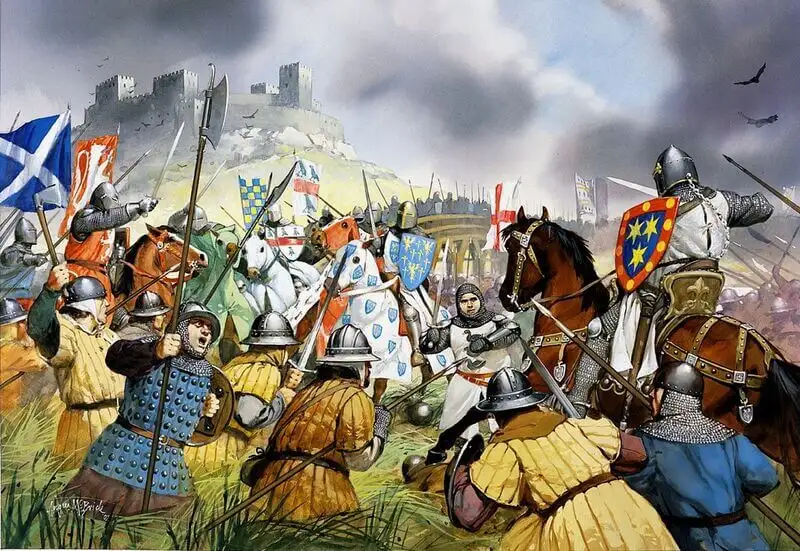
Battle of Grunwald (1410)
Also known as the Battle of Tannenberg, the Battle of Grunwald in 1410 pitted the Polish-Lithuanian alliance, with about 39,000 troops, against the Teutonic Empire’s 27,000. The alliance won, with around 5,000 allied and 15,000 Teutonic casualties.
The battle stemmed from power struggles between the Teutonic Order and its neighbors. Using chainmail, spears, and solid defensive tactics, the alliance exploited terrain advantages to crush the Teutons, shifting the balance of power in Eastern Europe.
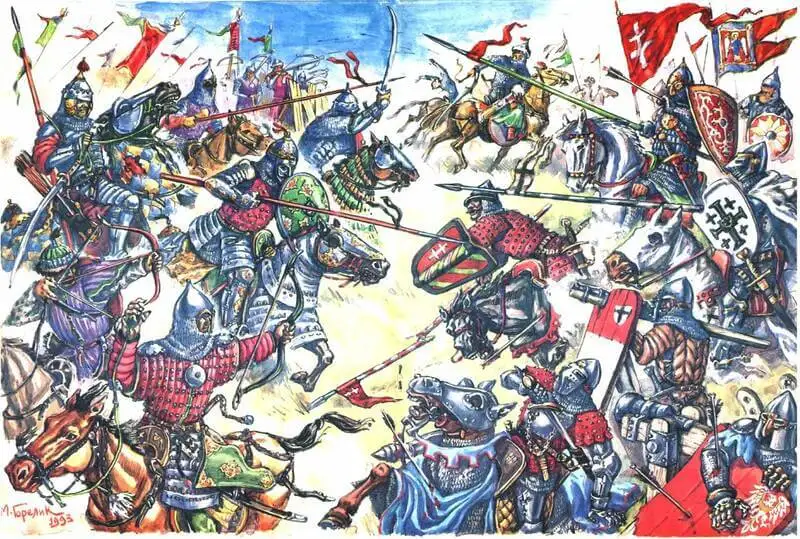
Battle of Bouvines (1214)
The Battle of Bouvines in 1214 saw a French force of about 18,000, led by King Philip II, defeat an English-Flemish-Dutch coalition of roughly 15,000. Casualties included around 5,000 French and 3,000 coalition troops.
The battle arose from territorial and power disputes after England’s King John relinquished French claims. Using battle axes and crossbows effectively with strong defenses, Philip II’s strategic leadership secured a decisive victory, strengthening French authority and weakening the coalition.
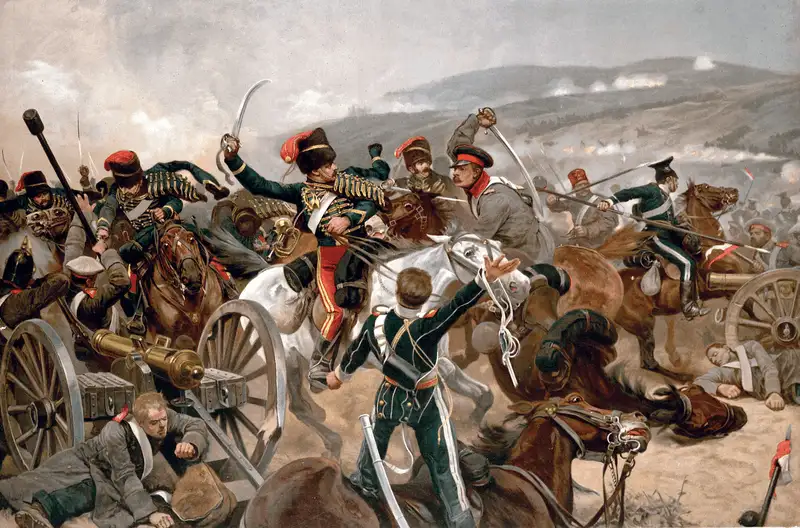
Battle of Courtrai (1302)
Also known as the Battle of the Golden Spurs, the Battle of Courtrai in 1302 saw a Flemish force of about 12,000 defeat a Holy Roman Empire army of roughly 30,000, led by King Philip IV of France. Casualties totaled around 3,000 Flemish and 15,000 Imperial troops.
The battle was driven by disputes over power and trade freedoms between Flanders and the Empire. Using crossbows and sturdy infantry with solid defensive tactics, the Flemish overcame their foes, weakening Imperial authority and bolstering Flanders’ regional standing.
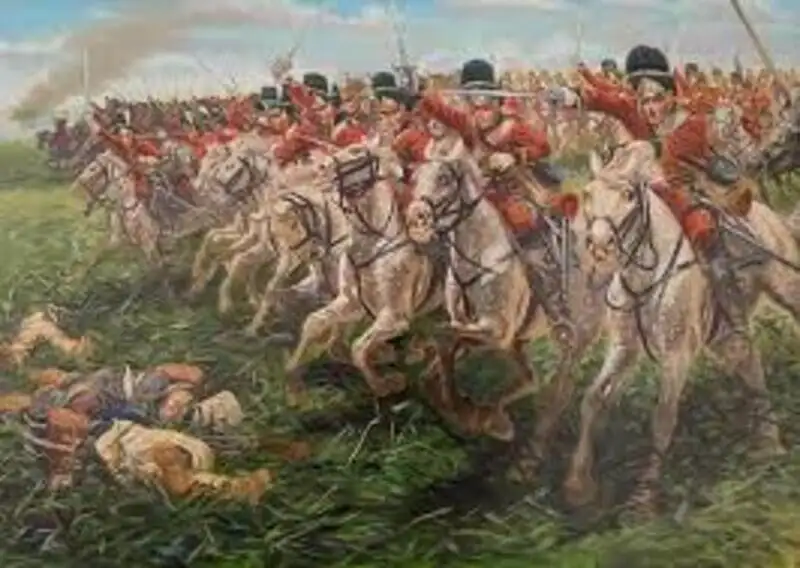
Conclusion
The top 9 famous medieval battles we’ve explored reflect not only the ferocity of warfare but also the evolution of military tactics and the bravery of warriors. Understanding these battles offers deeper insight into history and their role in shaping the modern world. Beyond mere historical events, they provide valuable lessons in strategy, leadership, and perseverance in war.

